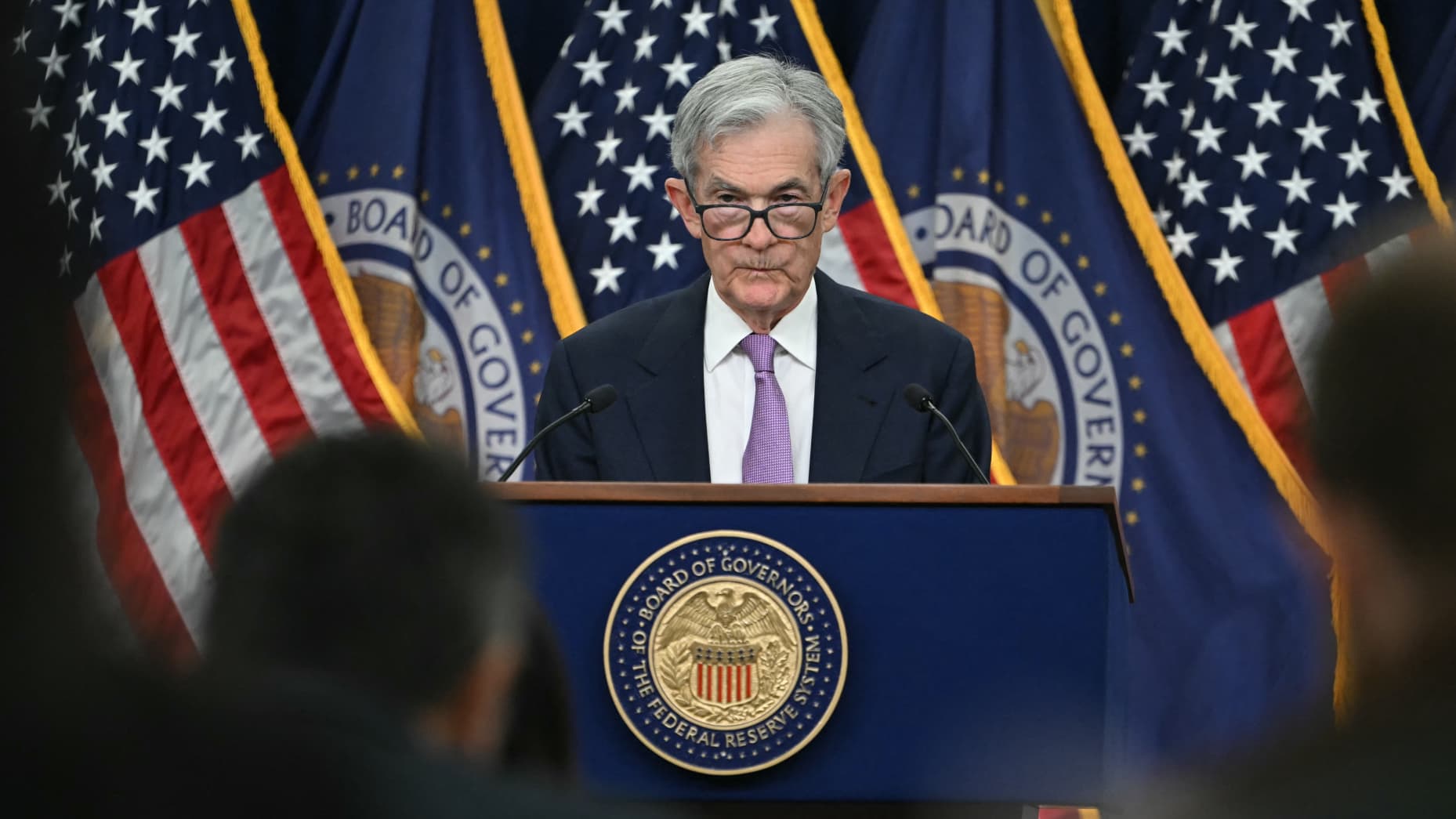The Federal Reserve on Wednesday lowered its benchmark interest rate by 25 basis points, marking the third consecutive reduction in an effort to recalibrate monetary policy amid mixed economic signals. However, the Fed also indicated a more restrained approach to rate cuts in the coming years, tempering expectations of further easing.
Key Decision Details
The Federal Open Market Committee (FOMC) reduced the overnight borrowing rate to a range of 4.25% to 4.5%, a level last seen in December 2022. The move was widely anticipated, but markets had been focused on the Fed’s guidance for the future.
The Fed’s updated “dot plot,” which charts individual members’ rate projections, suggested only two additional cuts in 2025, down from the four anticipated in September. The long-term neutral rate was revised slightly upward to 3%, reflecting a gradual shift in the Fed’s outlook.
“With today’s action, we have lowered our policy rate by a full percentage point from its peak, and our policy stance is now significantly less restrictive,” Fed Chair Jerome Powell said during a post-meeting press conference. “We can therefore be more cautious as we consider further adjustments to our policy rate.”
“The Fed delivered a distinctly hawkish tone today, together the widely expected 25 bp cut. The Fed now expects inflation to get to target later, in 2026, and that current policy rates are significantly closer to neutral. Though the Fed does not explicitly incorporate the possible changes in policy under the new administration, yet, the FOMC’s projection of higher inflation next year suggests they are incorporating the more uncertain outlook for inflation,” said Mahmood Pradhan, Head of Global Macro Economics, Amundi Investment Institute.
Market Reaction
Wall Street reacted sharply to the Fed’s cautious tone. The Dow Jones Industrial Average plunged 1,123.03 points, or 2.58%, to close at 42,326.87. The S&P 500 fell 2.95%, while the Nasdaq Composite slid 3.56%.
“Confirming rates higher for longer – FOMC median raised to 3.9 percent from 3.4 percent – led to a significant market reaction, a much stronger dollar, a sharp increase in Treasury yields and equity indices markedly lower,” added Pradhan
Treasury yields spiked, with the policy-sensitive two-year yield climbing to 4.3%, reflecting skepticism about the Fed’s ability to lower rates further. Futures markets also pared back expectations for additional cuts in 2025.
“As financial markets are heading enter 2025, the Fed is likely to slow the pace of easing, as uncertainty over the path of inflation rises. Progress in bringing down inflation has slowed, and potential changes in fiscal, trade, and immigration policies could complicate the Fed’s efforts to reach a neutral rate, a level that is neither restrictive nor stimulating for the economy,” said Mohamed Hashad, Chief Market Strategist, Noor Capital in a weekly recap report.
Internal Division
For the second straight meeting, the FOMC saw dissent, with Cleveland Fed President Beth Hammack opposing the cut. In November, Governor Michelle Bowman also dissented, marking the first such opposition from a governor since 2005.
The post-meeting statement made subtle changes, adjusting language about the “extent and timing” of future rate changes, signaling a slower pace of easing.
Goldman Sachs analysts noted the shift, stating it “hints at a more deliberate approach to rate cuts ahead.”
Economic Outlook and Challenges
Despite the rate cut, the Fed raised its 2024 GDP growth projection to 2.5%, a notable increase from its September estimate. However, growth is expected to slow to its long-term trend of 1.8% in subsequent years.
The unemployment rate projection was lowered to 4.2%, while inflation forecasts for 2024 were revised higher, with core inflation expected at 2.8%, above the Fed’s 2% target.
These projections come as the U.S. economy shows resilience, with fourth-quarter GDP growth projected at 3.2% by the Atlanta Fed. However, the Fed remains cautious about over-tightening, which could unnecessarily stifle economic momentum.
“We moved pretty quickly to get to here, and I think going forward obviously we’re moving slower,” Powell said.
Policy Implications
The Fed’s latest move underscores its effort to normalize policy after a period of aggressive tightening. Powell noted the cuts are meant to recalibrate policy to less restrictive levels while maintaining vigilance over inflation risks.
“We think the economy is in [a] really good place. We think policy is in a really good place,” Powell said.
However, markets have pushed back against the Fed’s strategy, with rising mortgage rates and Treasury yields reflecting skepticism about the central bank’s future moves.
Looking Ahead
The Fed’s cautious stance leaves the door open for future adjustments but signals a measured approach as it balances growth and inflation risks. The next steps will hinge on evolving economic conditions and the impact of fiscal policies under President-elect Donald Trump, whose proposed tax cuts and tariffs could complicate the Fed’s task.
“We need to take our time, not rush, and make a very careful assessment,” Powell said of the fiscal uncertainties.
With the Fed slowing its pace, investors and policymakers alike face a delicate balancing act in navigating a complex economic landscape.





